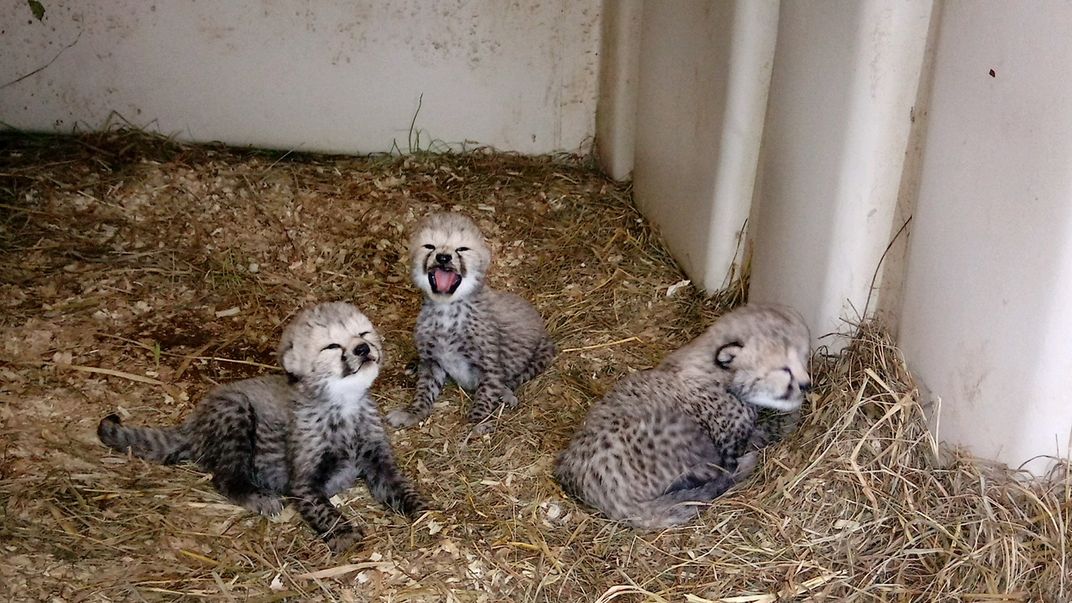New Cheetah Mom Earns High Marks Caring for Her Three New Smithsonian Cubs
Cubs born to Sukiri on September 22 are latest in the National Zoo’s efforts to diversify gene pool of captive born cheetahs
:focal(1147x860:1148x861)/https://tf-cmsv2-smithsonianmag-media.s3.amazonaws.com/filer/b3/e7/b3e70e41-8a93-4c24-b736-498c1e0e440d/img_20180926_085826.jpg)
For first-time-moms, the first weeks of motherhood prove to be both joyous and uncertain. Any and all affirmation is appreciated. As for Sukiri, the first-time mother to the Smithsonian’s latest litter of cheetah cubs, she has received nothing but praise.
“It is especially exciting to see Sukiri bonding with and successfully raising these cubs,” says Adrienne Crosier, cheetah biologist at Smithsonian Conservation Biology Institute in Front Royal, Virginia.
The three latest cheetahs, born September 22, raise the total number birthed at the Virginia facility in 2018 to a perfect ten. Over the past 11 years, the Conservation Biology Institute (SCBI) has welcomed a total of 56 newborn cheetah cubs, 44 of which have survived. Sukiri was herself born at SCBI in 2012.
Biologists were initially worried Sukiri would struggle adapting to motherhood. Her own mother aggressively handled her and her two brothers, wounding the cubs’ necks when she carried them. Concerned by this, SCBI biologists made the decision to hand-rear Sukiri and her brothers apart from their mother. Following several surgeries, the cubs made a full recovery and have all survived into adulthood.
“We always want moms to raise their own cubs because it increases the probability that those cubs will breed and raise their own cubs as adults,” Crosier says. “Sukiri was clearly able to adapt and being hand-reared has not affected her ability to raise cubs at all.”
As listed in the International Union for Conservation of Nature, cheetahs are a “vulnerable” species. Just about 7,000 live in the wild, all in disparate habitats. Part of SCBI’s goal is to create a self-sustaining population of cheetahs in human care. To do this, SCBI scientist aim to diversify and expand the genetic pool. The male cheetah who sired Sukiri’s three cubs, Sampson, plays a fundamental role in these efforts.

Sampson is a “very valuable cheetah,” according to Devin Murphy of SCBI’s communication team. Native to South Africa, Sampson arrived at SCBI in 2011 unrelated to most cheetahs in North American zoos. Therefore, by fathering Sukiri’s three cubs, Sampson grants the greater gene pool an exciting boost.
SCBI additionally works to expand human understanding of cheetah reproductive biology. Sukiri’s fecal samples will contribute to ongoing research, as SCBI scientists work to develop a non-invasive test to detect pregnancy in female cheetahs in the first 30 days.
Sukiri’s three cheetah cubs are not yet named, however they all appear healthy and well. Keepers, as they have for the past week, will continue to monitor the cubs’ growth and health through den cameras and visual checks. Except for period examinations, keepers intend to remain mostly hands off as they let Sukiri find her footing as a new mother of three.